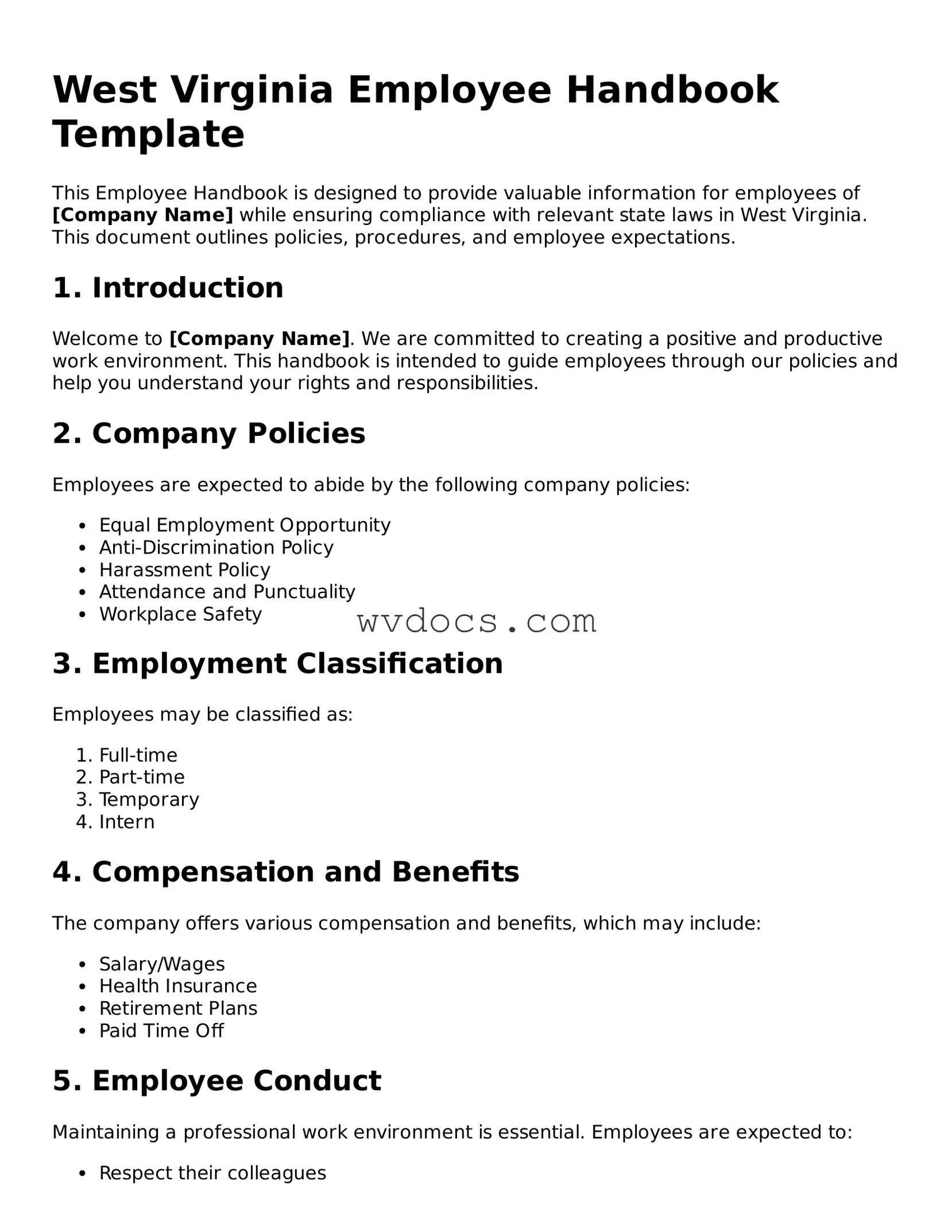The West Virginia Employee Handbook form shares similarities with the Employee Manual, which serves as a comprehensive guide for employees about company policies and procedures. Both documents outline expectations, rights, and responsibilities, ensuring that employees understand their roles within the organization. The Employee Manual often includes sections on workplace conduct, attendance, and benefits, mirroring the structure found in the Employee Handbook.
Another document akin to the Employee Handbook is the Orientation Guide. This guide is typically provided to new hires during their onboarding process. Like the Employee Handbook, the Orientation Guide introduces company culture, policies, and essential procedures, helping new employees acclimate to their work environment. Both documents aim to create a smooth transition for employees into their roles.
The Code of Conduct is another document that aligns closely with the Employee Handbook. This code outlines the ethical standards and behavioral expectations for employees. Similar to the Employee Handbook, it addresses issues such as harassment, discrimination, and conflict of interest, reinforcing the organization's commitment to a respectful workplace.
Understanding the significance of the New York ATV Bill of Sale form is essential not just for buyers and sellers, but for anyone involved in the transfer of all-terrain vehicles in New York. This document not only facilitates a clear record of the transaction but also helps ensure compliance with state regulations, making it indispensable for legal purposes. For those looking for templates and guidance on preparing this document, resources like smarttemplates.net can provide the necessary support.
The Policy Manual is also comparable to the Employee Handbook. It provides detailed information on specific policies related to various aspects of employment, such as leave policies, disciplinary procedures, and safety protocols. Both documents serve to inform employees of their rights and the procedures they must follow, promoting consistency across the organization.
Job Descriptions can be seen as a related document as well. While the Employee Handbook provides an overview of employee rights and responsibilities, job descriptions focus on the specific duties and qualifications required for each position. Both documents are essential for clarifying expectations and ensuring that employees understand their roles within the company.
The Benefits Guide is another document that complements the Employee Handbook. It details the benefits offered to employees, such as health insurance, retirement plans, and paid time off. While the Employee Handbook may touch on these benefits, the Benefits Guide provides in-depth information, ensuring employees fully understand what is available to them.
The Safety Manual is similar in its aim to protect employees and ensure a safe working environment. This document outlines safety protocols, emergency procedures, and reporting guidelines. Like the Employee Handbook, it emphasizes the importance of safety and the responsibilities of both employees and employers in maintaining a safe workplace.
Performance Evaluation Forms are also related to the Employee Handbook. These forms outline the criteria and processes for evaluating employee performance. While the Employee Handbook may describe the evaluation process in general terms, these forms provide specific details on how performance will be assessed, linking directly to the expectations set forth in the Handbook.
Training Manuals can be compared to the Employee Handbook as well. They provide detailed instructions and guidelines for specific job-related tasks and skills. While the Employee Handbook offers a broad overview of company policies, Training Manuals focus on the practical aspects of performing job duties, ensuring employees have the necessary tools to succeed.
Finally, the Exit Interview Form is another document that shares similarities with the Employee Handbook. This form is used when an employee leaves the organization and helps gather feedback about their experience. Like the Employee Handbook, it aims to improve workplace culture and practices by understanding employee perspectives, ultimately benefiting both current and future employees.
